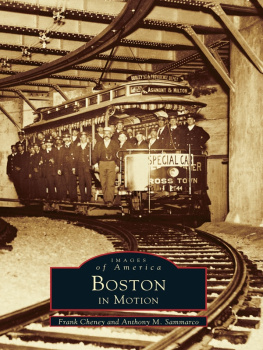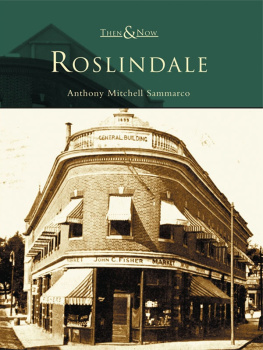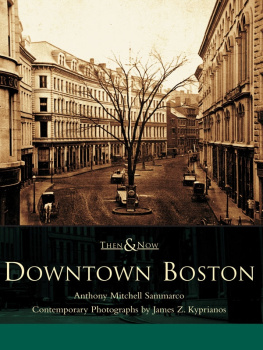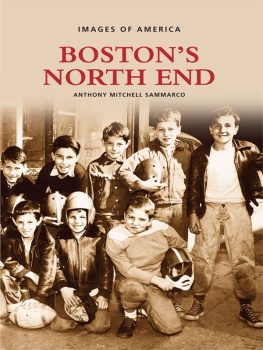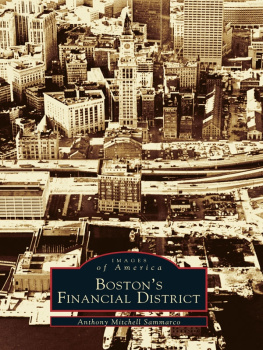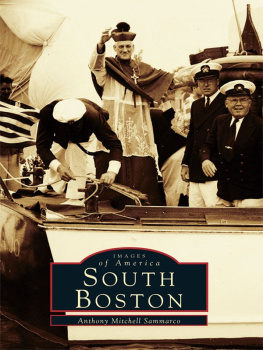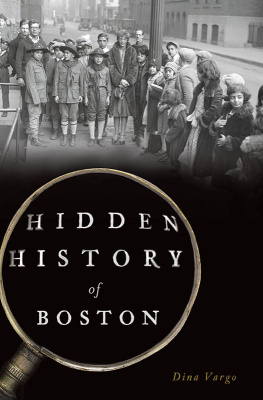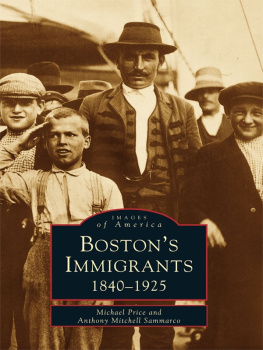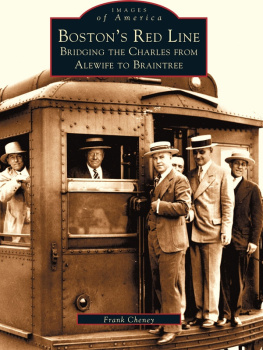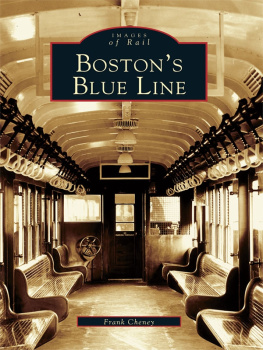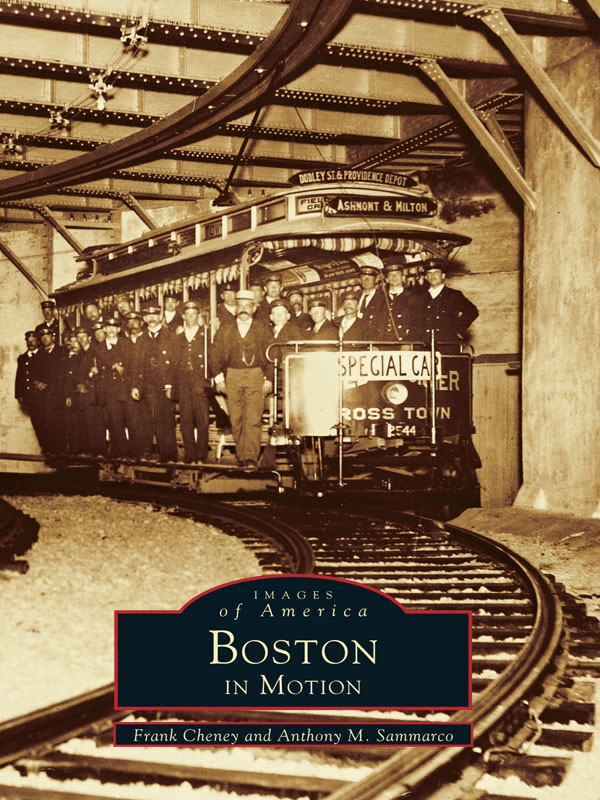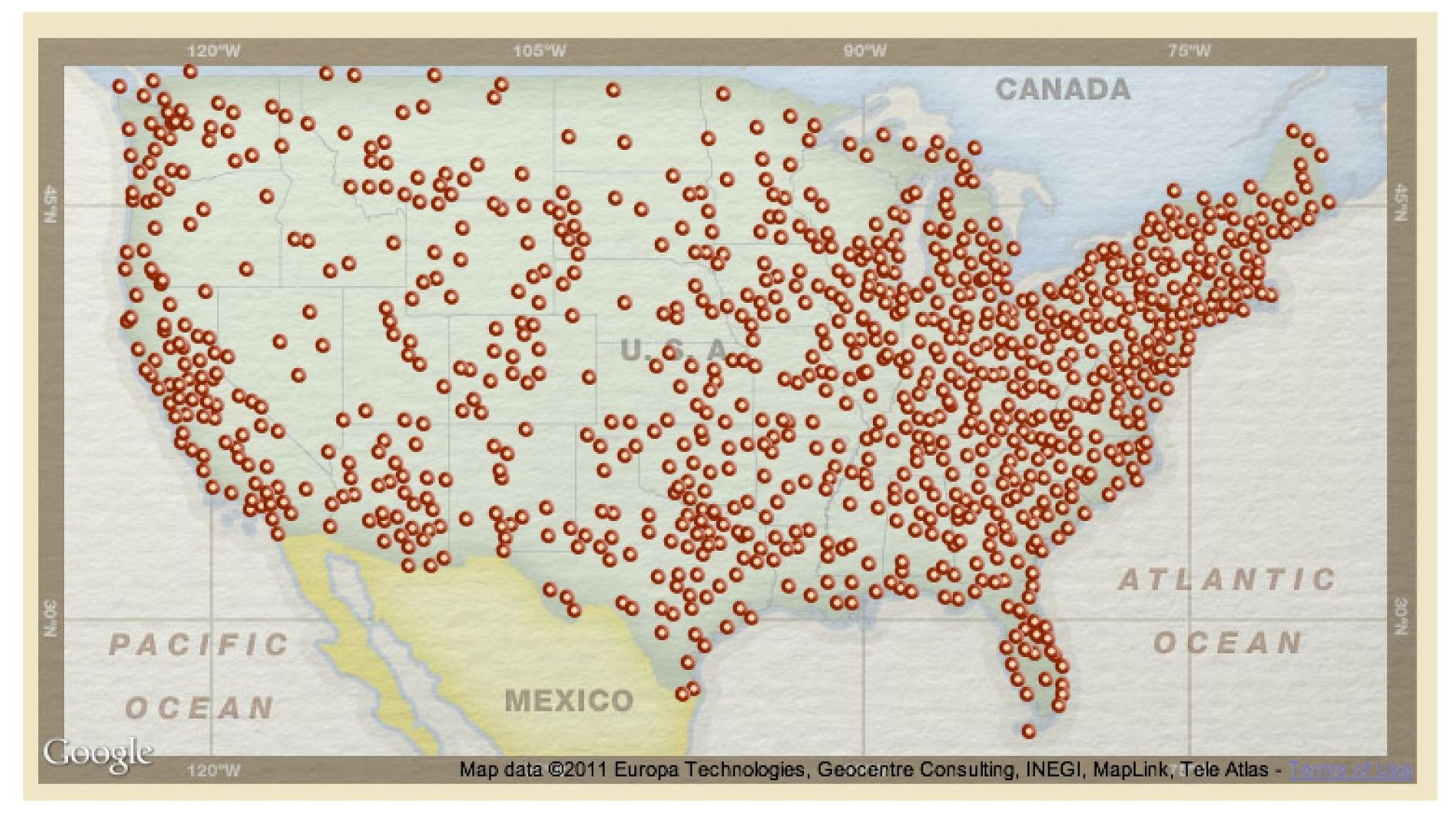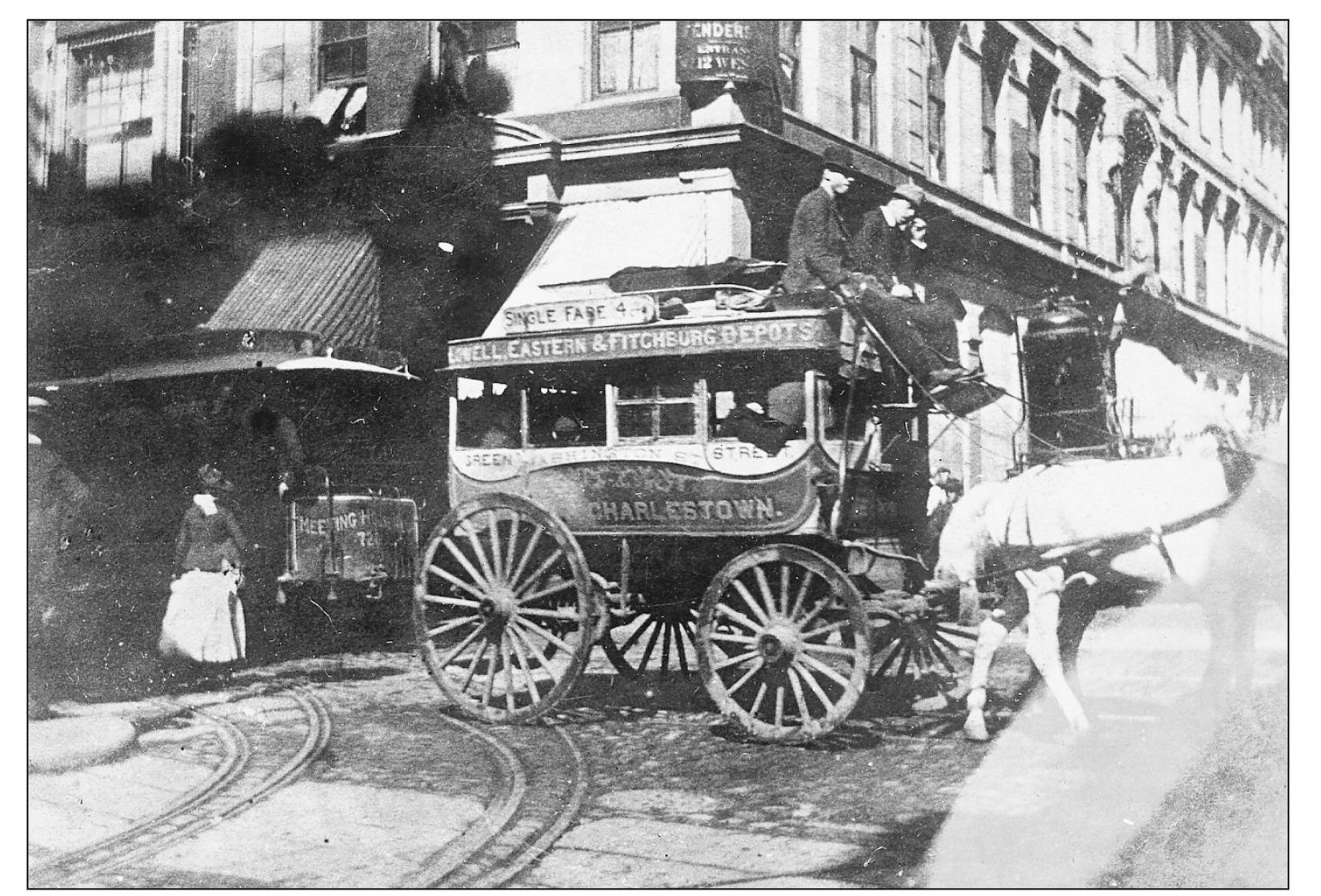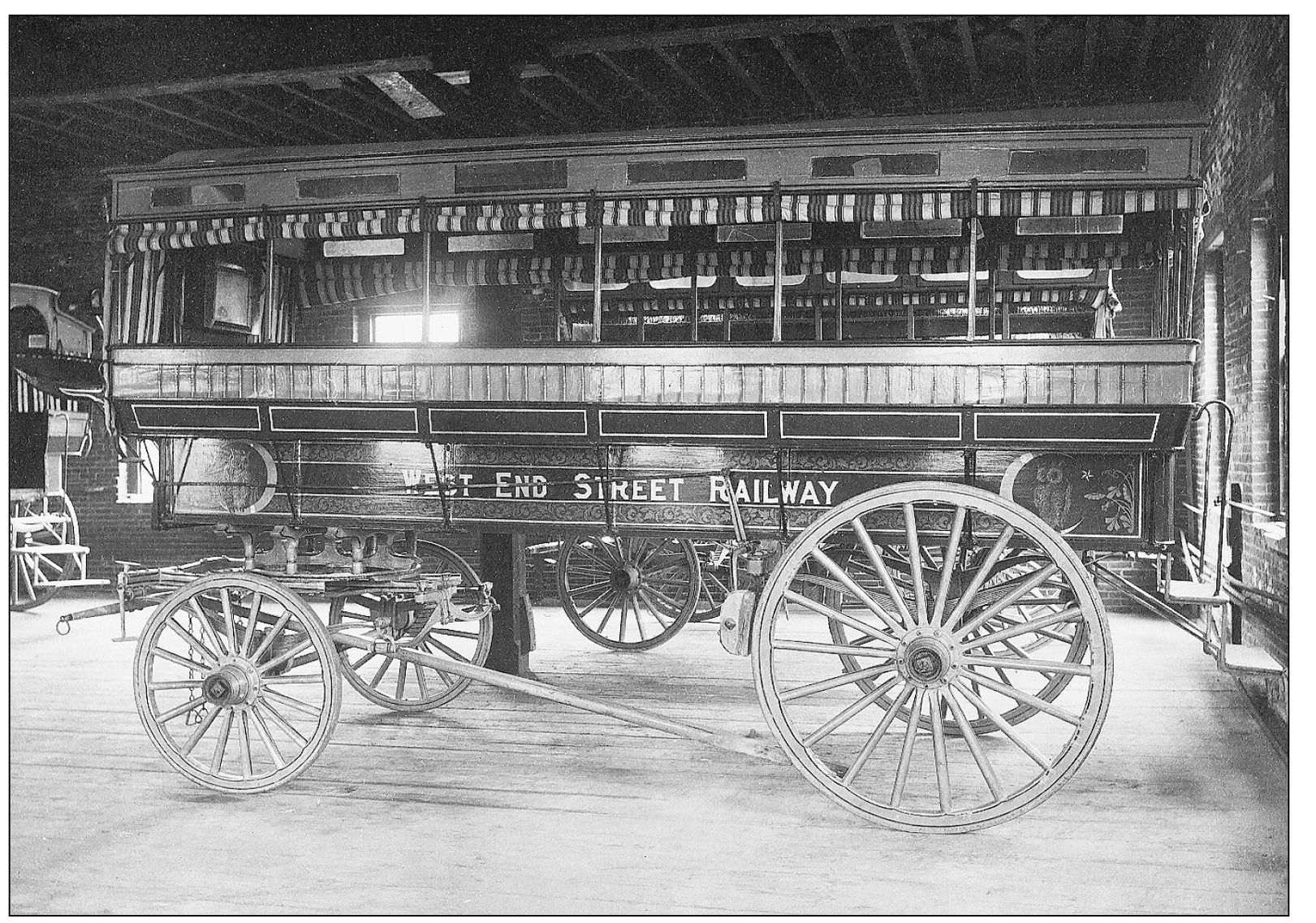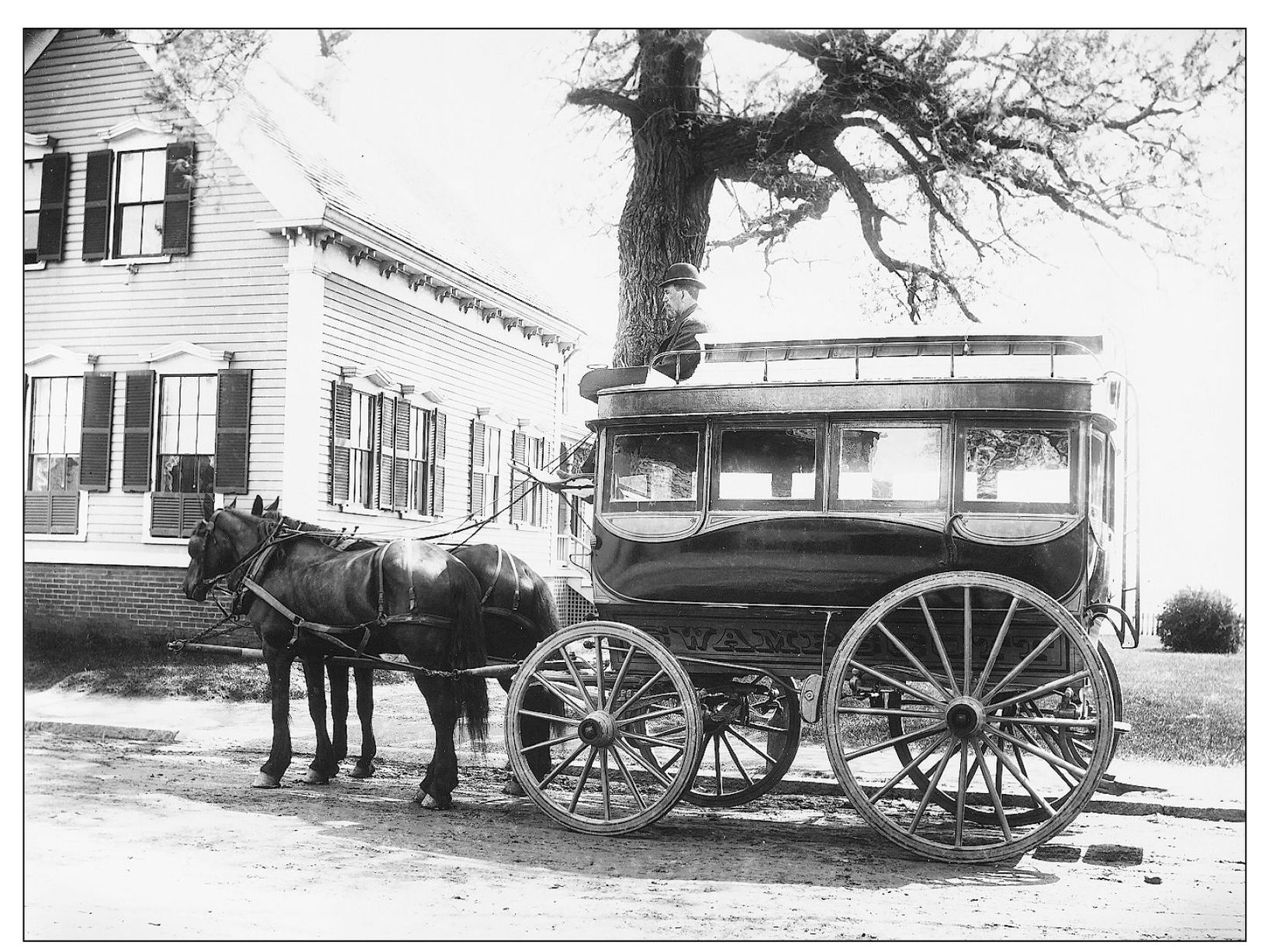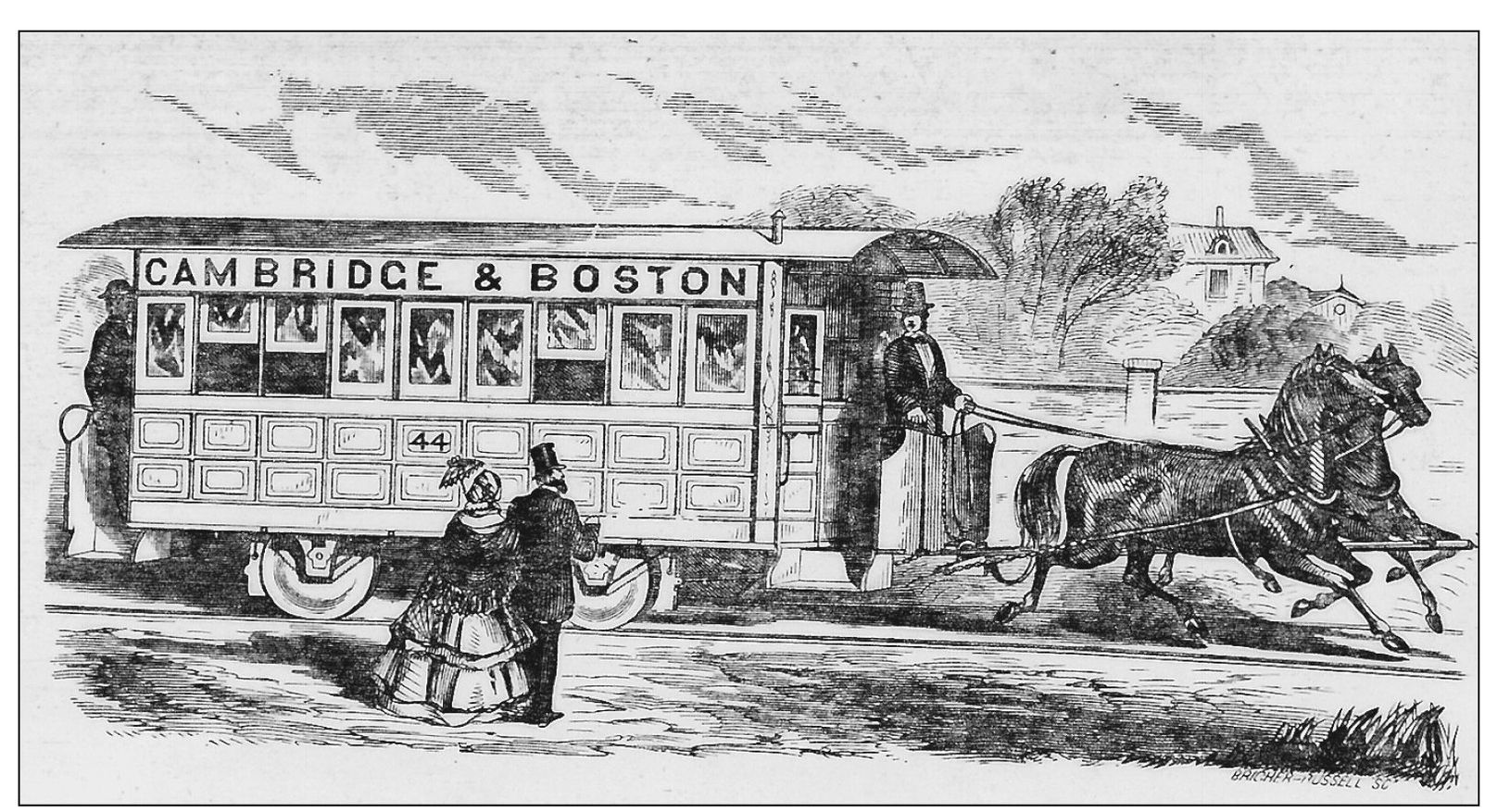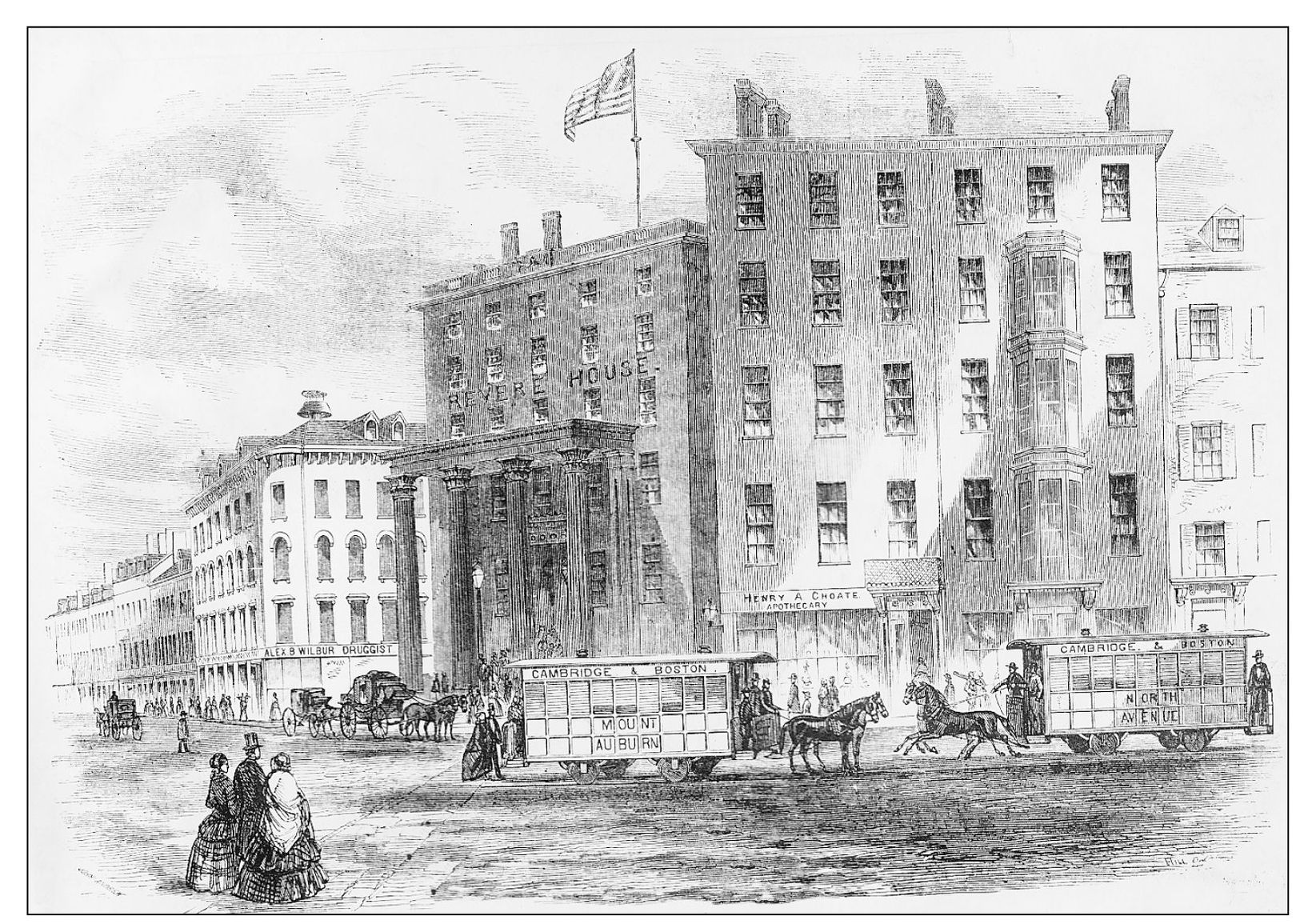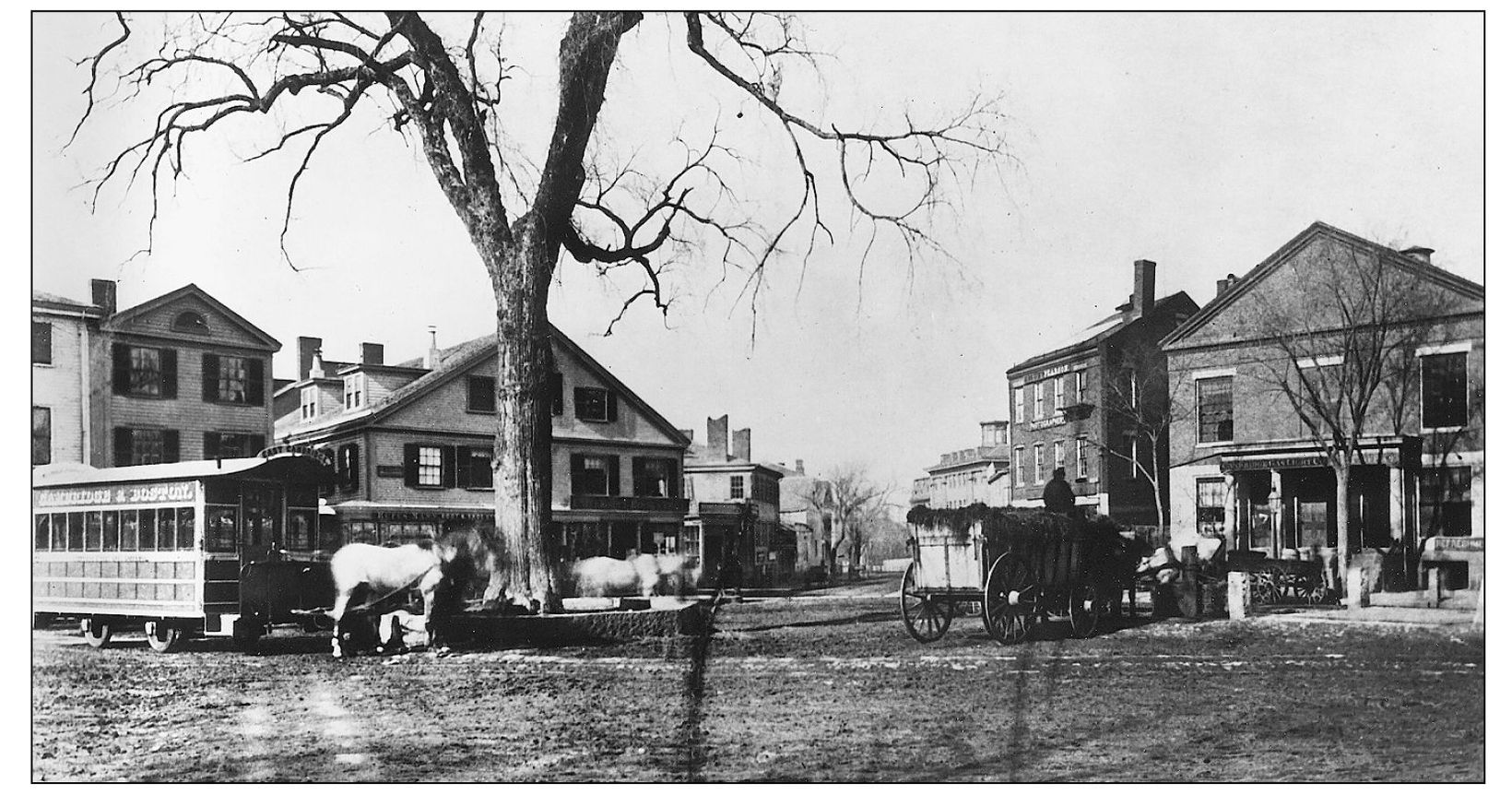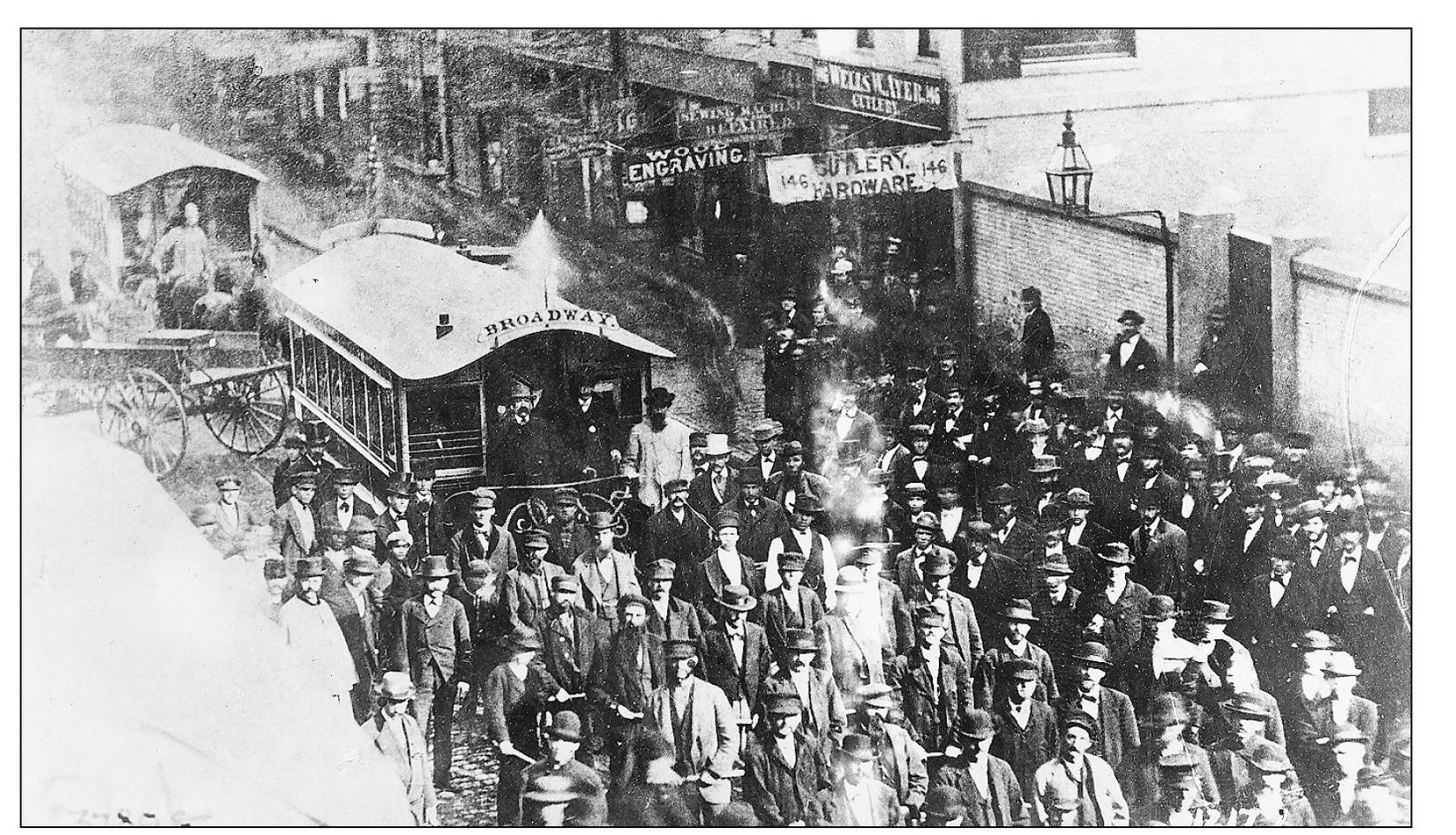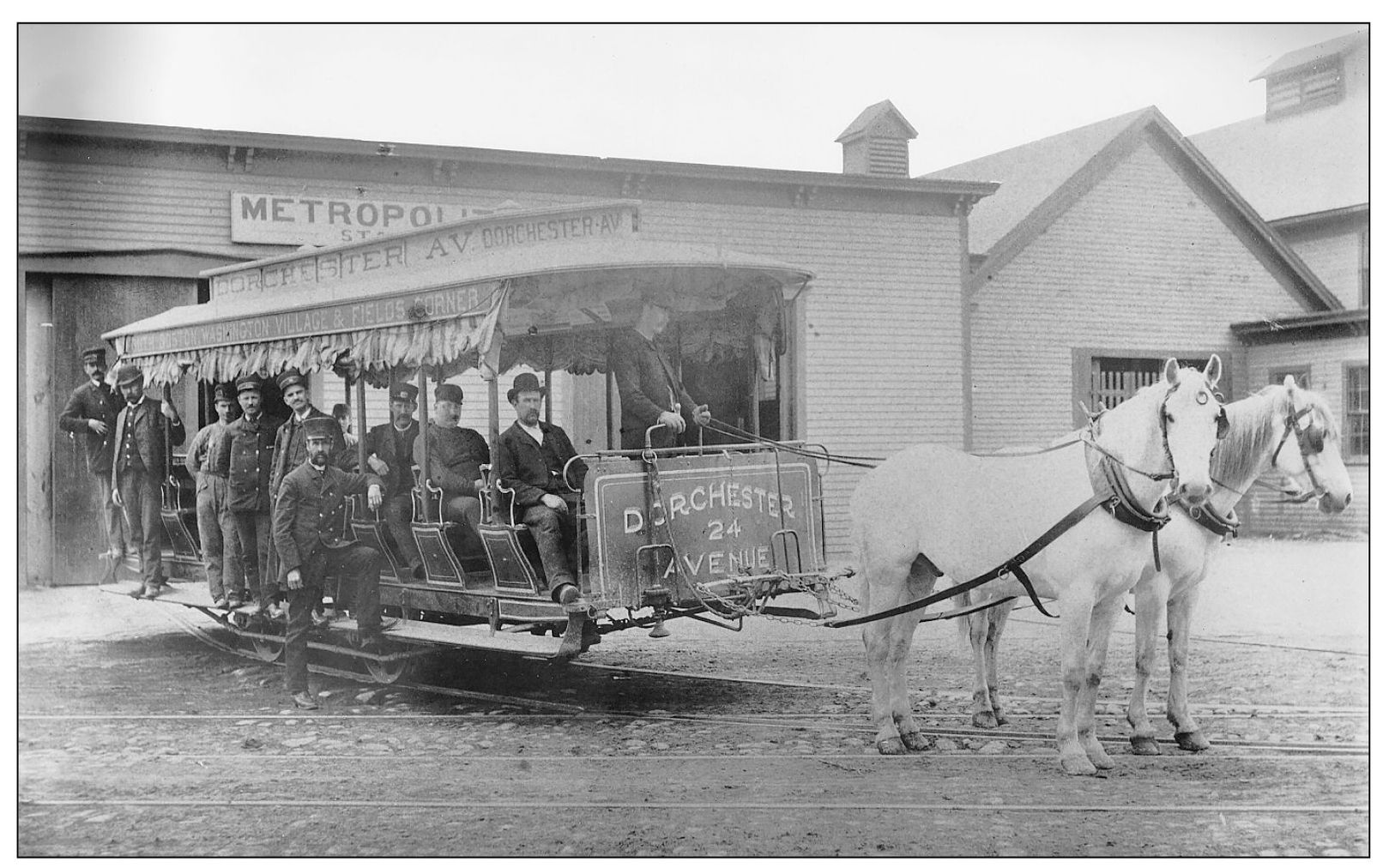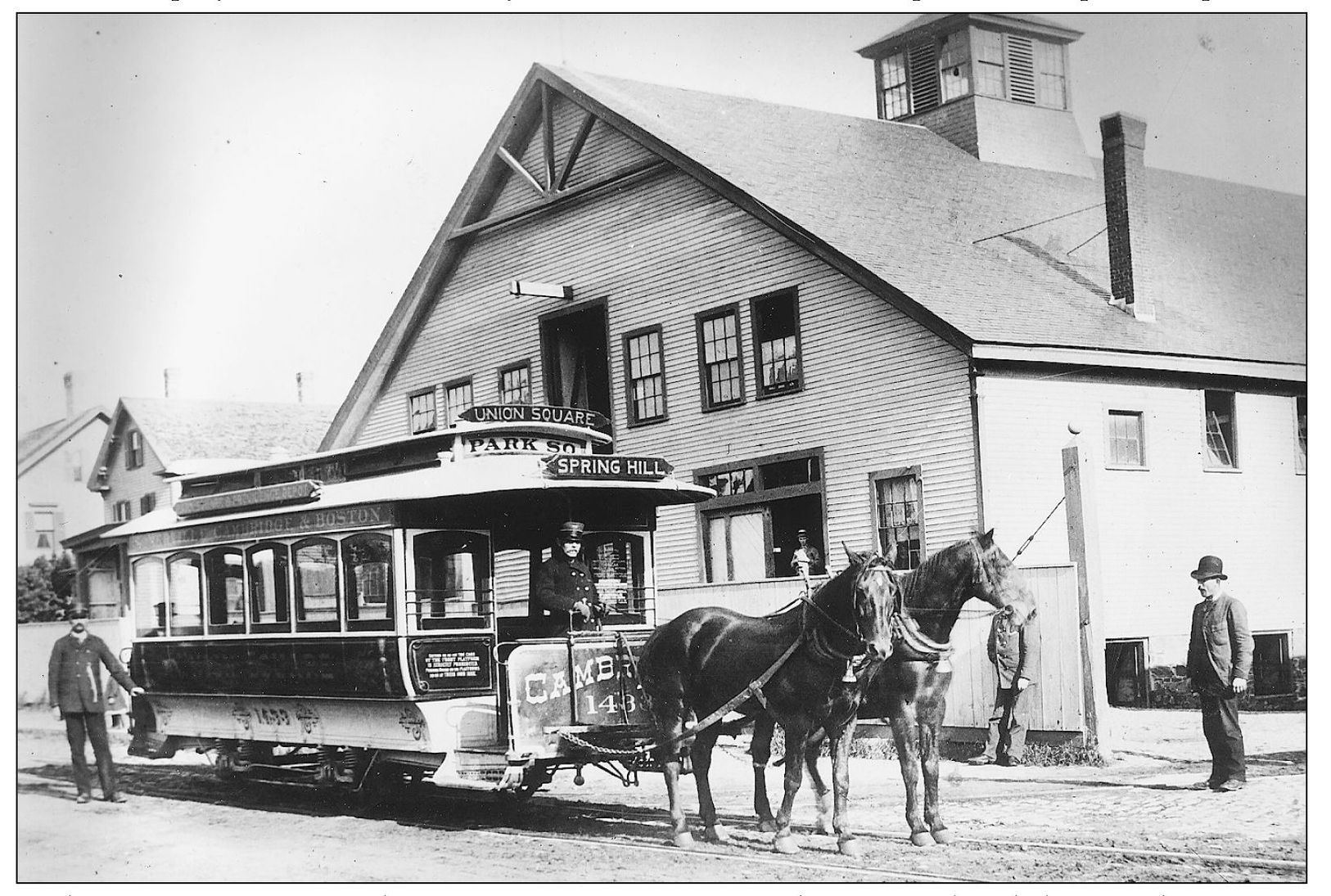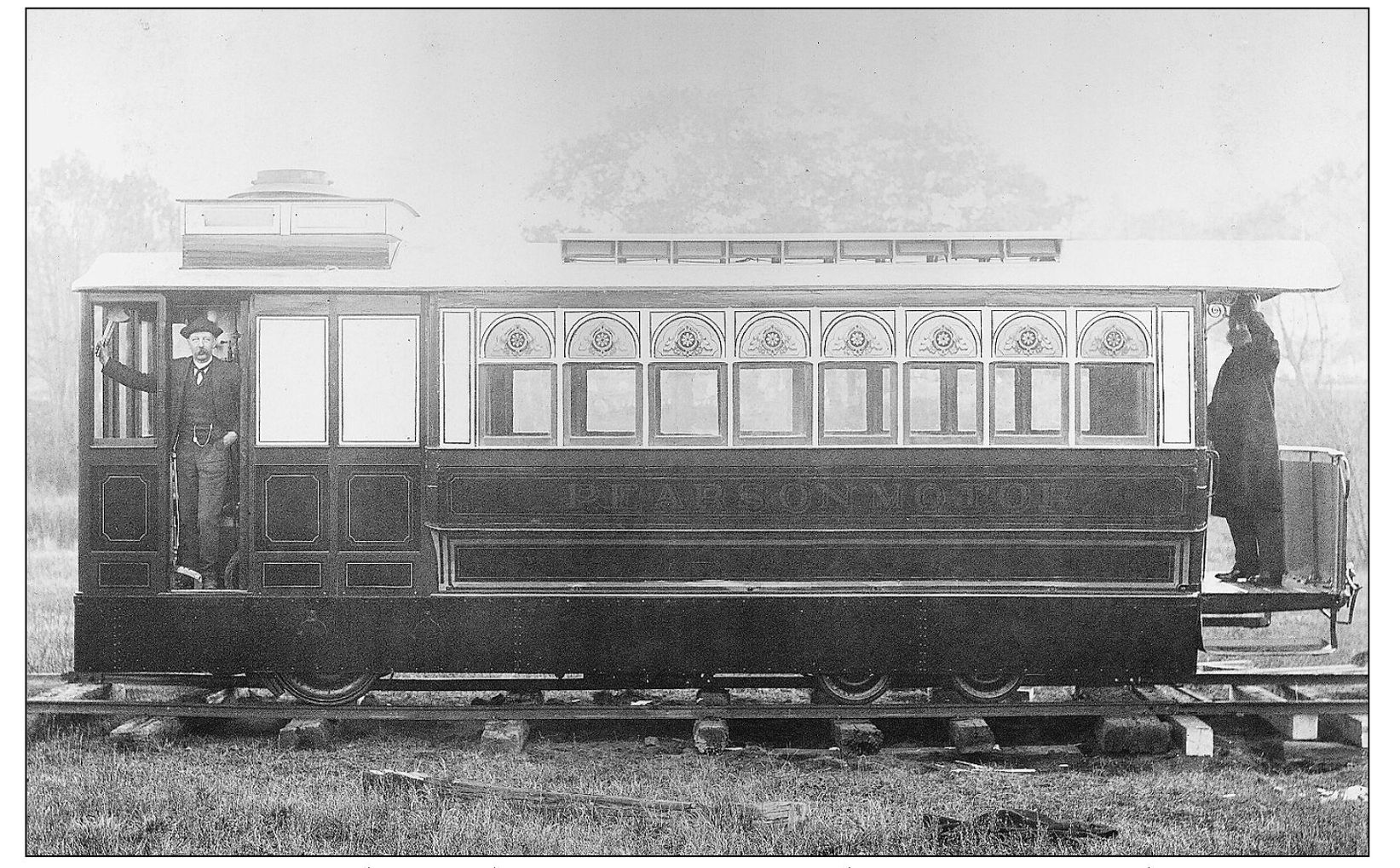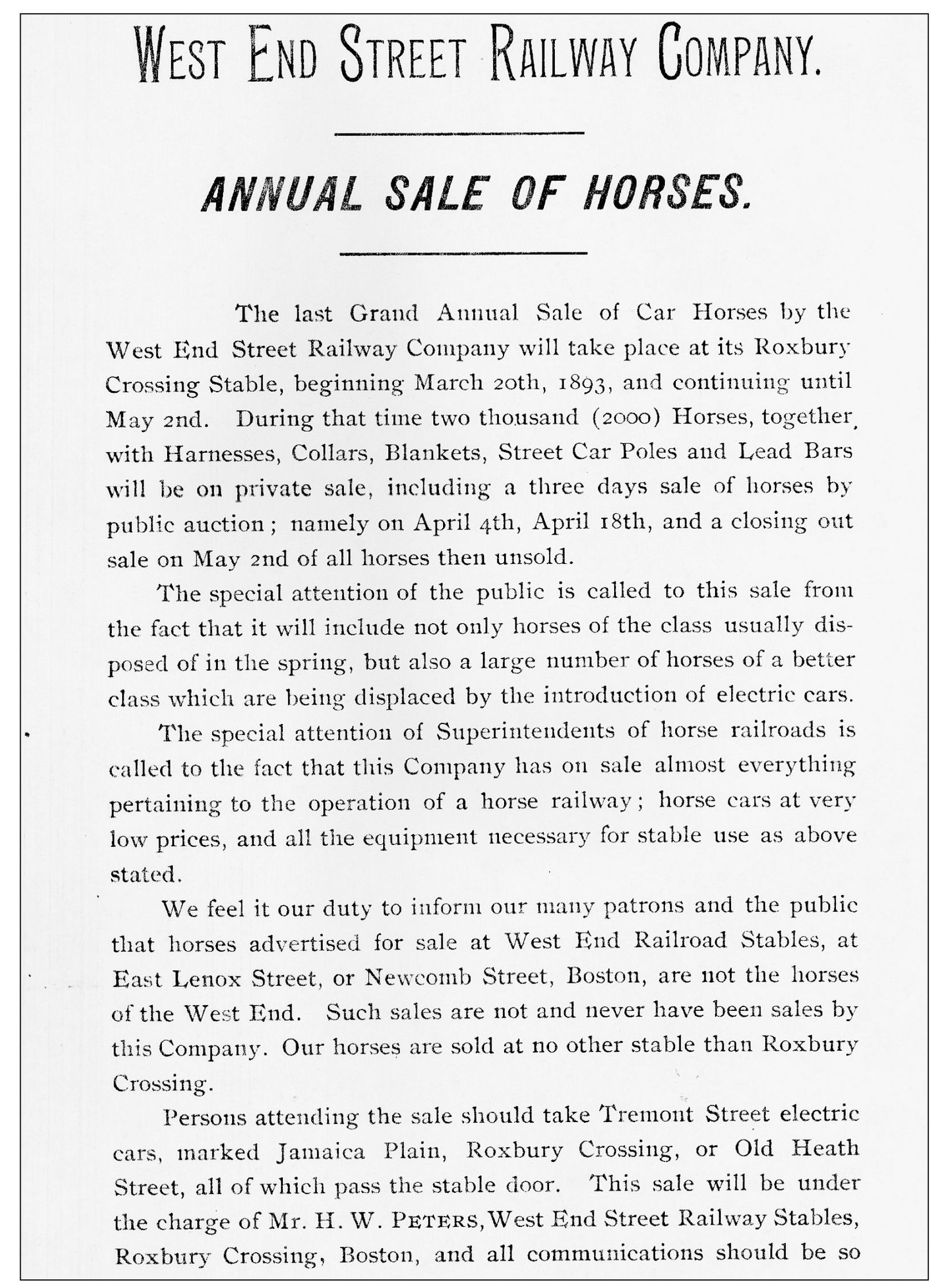One
THE EARLY YEARS
Typical of the omnibuses that once provided Bostons local transit service is this coach of Jacob Hathornes Citizens Line on the route from Northampton Street to Thompson Square in Charlestown. The photograph was taken at Washington and West Streets in 1889, shortly before Hathorne sold his omnibus lines to the West End Street Railway after being in business for 40 years.
During the winter months when snow covered many streets for weeks at a time, sled runners replaced the wheels on many omnibuses, such as this one at Boylston Street in 1899, in front of the Boston Public Library. This coach was in use on the Marlborough Street Horse Car Line, which often went unplowed after winter storms. On the right is the new Old South Church, designed by Cummings and Sears and built in 1874.
For summer use, many omnibus operators provided long, open-sided omnibuses for their patrons, which were called barges for reasons lost in antiquity. One such barge, Number 1091 of the West End Street Railway, was photographed in September 1897. These vehicles were quite popular for charter trips to parks and beach resorts.
Many of Bostons omnibuses, rendered obsolete by the advent of the electric trolleys, found second careers serving passengers in suburban areas such as this coach sold to an operator in Swampscott, viewed on May 22, 1901.
Bostons first horse car was run on March 26, 1856, by the Cambridge Railroad Company on the Harvard Square to Bowdoin Square route. The above print is a quite accurate depiction of the first cars; however, the car horses rarely trotted in the energetic manner shown here.
This print from the fall 1856 issue of Ballous Pictorial shows a view of Bowdoin Square with two Cambridge Railroad Horsecars passing the well-known Revere House Hotel. Initial opposition to running the cars on Sunday, the Lords Day, was overcome when the Cambridge Railroad pointed out that Sunday operation made it possible for the elderly and infirm to attend church services.
This bucolic view of Harvard Square, taken in 1858, shows a horsecar waiting between trips while the horses (attached to the wagon on the right) make use of the watering trough next to the sidewalk. In the days of horse power, these troughs were commonly found at busy squares and intersections.
The Highland Street Railway Company connected Roxbury and Boston via Warren Street and Shawmut Avenue. Its cars were painted in a handsome Highland Plaid scheme. Note the double-decker open car on the right.
During 1872, the great epizootic disease, or horse influenza, swept the Boston area causing the death or incapacitation of thousands of horses. The horse railway companies were so desperate to maintain service that they hired scores of men to pull the cars, as shown in this view of a South Boston-bound car on Washington Street.
Here we see an open horse car of the Metropolitan Railroad Company, Bostons largest horse railway system, in front of the carbarn at Fields Corner in Dorchester, 1878. It appears that the railroad employees were not too busy to climb aboard the car and pose for the photographer.
In this 1889 view we see a horse car of Bostons West End Street Railroad about to depart from the depot at Spring Hill in Somerville for the long trip to Park Square in Boston, via Union Square and Cambridge. Many cars of this type were converted to electric cars and remained in use for many years.
This open horse car, borrowed from its regular route on Longwood Avenue, is seen at the Mount Auburn Cemetery, c. 1890. Parked at the curb and draped in bunting, the car was apparently hired for a funeral party or Memorial Day event at the cemetery.
Between May 1865 and November 1867, steam-powered streetcars were used on four routes around Boston. The cars, such as the one above, were converted horse cars with upright steam boilers. Due to wear and tear on the light horsecar rails and complaints from the owners of frightened horses, they were given up.
With the rapid conversion of Bostons street railway system from horse to electric power, the West End Street Railway found itself with thousands of horses and hundreds of horse cars it no longer needed. However, the company found a ready market for most of this equipment and avidly pursued its profitable disposal as seen in this notice of March 1893.

